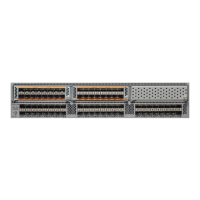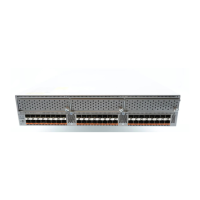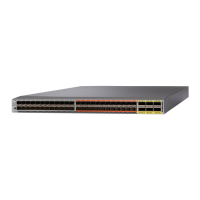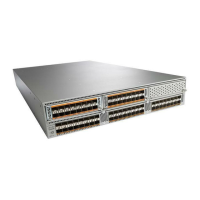Send feedback to nx5000-docfeedback@cisco.com
1-2
Cisco Nexus 5000 Series Switch CLI Software Configuration Guide
OL-16597-01
Chapter 1 Configuring SAN Port Channels
Information About SAN Port Channels
This section describes SANs and includes the following topics:
• Understanding Port Channels and VSAN Trunking, page 1-2
• Understanding Load Balancing, page 1-3
Understanding Port Channels and VSAN Trunking
Switches in the Cisco Nexus 5000 Series implement VSAN trunking and port channels as follows:
• A SAN port channel enables several physical links to be combined into one aggregated logical link.
• An industry standard E port can link to other vendor switches and is referred to as inter-switch link
(ISL), as shown on the left side of Figure 1-1.
• VSAN trunking enables a link transmitting frames in the EISL format to carry traffic for multiple
VSAN . When trunking is operational on an E port, that E port becomes a TE port. EISLs connects
only between Cisco switches, as shown on the right side of Figure 1-1.
See Chapter 1, “Configuring VSAN Trunking” for information on trunk interfaces.
Figure 1-1 VSAN Trunking Only
You can create a SAN port channel with members that are E ports, as shown on the left side of Figure 1-2.
In this configuration, the port channel implements a logical ISL (carrying traffic for one VSAN).
You can create a SAN port channel with members that are TE-ports, as shown on the right side of
Figure 1-2. In this configuration, the port channel implements a logical EISL (carrying traffic for
multiple VSANs).
Figure 1-2 Port Channels and VSAN Trunking
Switch 1
Any other
switch
ISL
E port E port
Switch 1 Switch 2
EISL
TE port TE port
Trunking
79938
EISL 3
EISL 2
EISL 1
Port channel
and trunking
Switch 1 Switch 2
ISL 3
ISL 2
ISL 1
Switch 1 Switch 2
79939
Port channel

